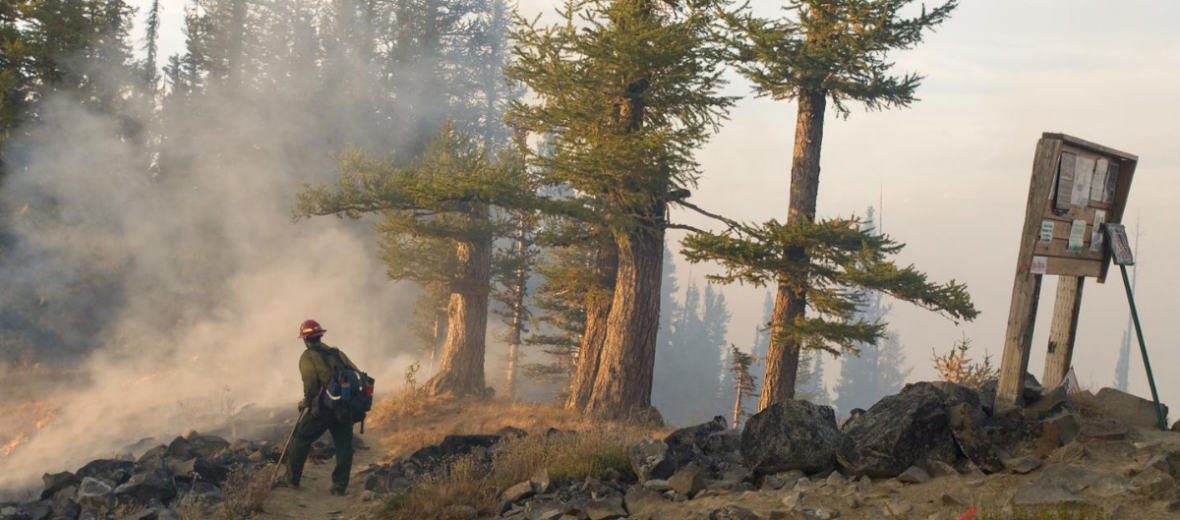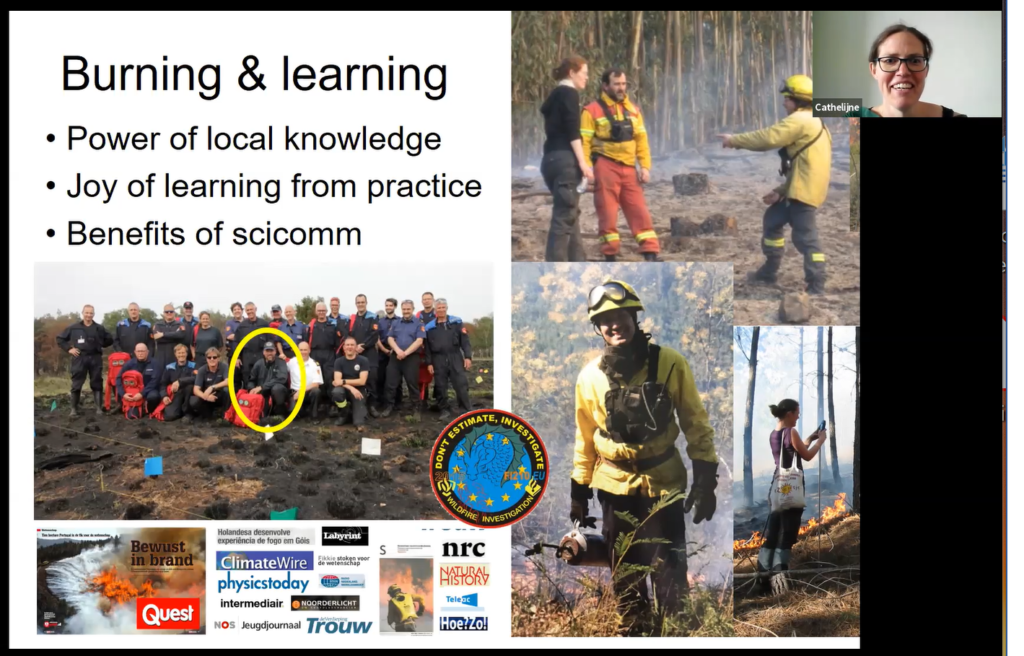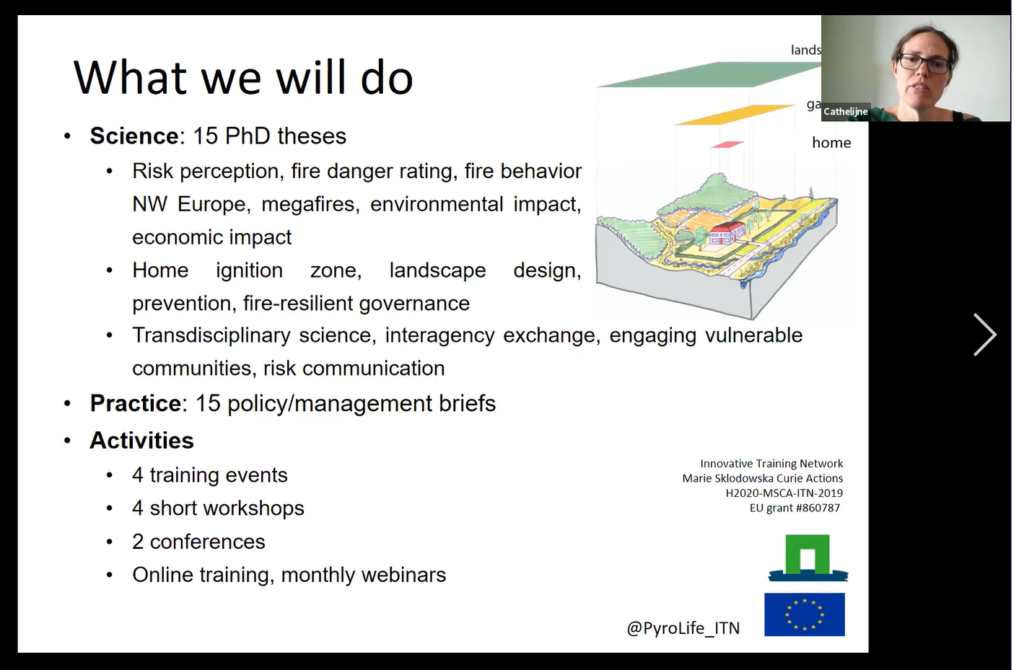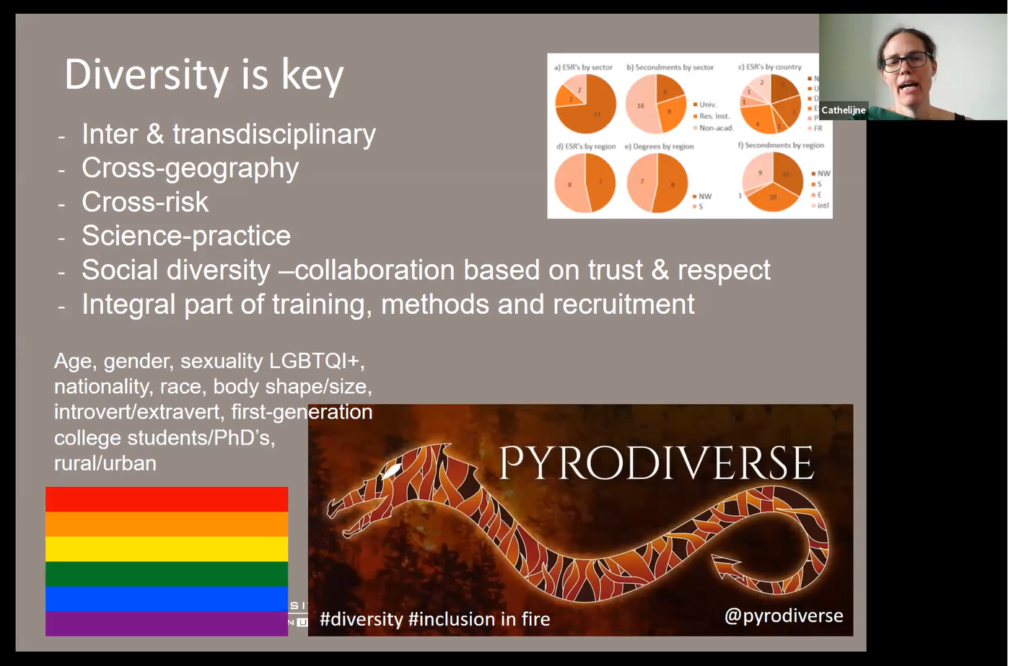
PyroLife International Symposium: Towards an Integrated Fire Management
Highlights from the PyroLife Symposium webinar on June 3, 2020 by Bethany E. Hannah and Kathleen Uyttewaal.
Dr. Cathelijne Stoof kicked off the 2020 PyroLife International Symposium with a presentation that introduced the PyroLife project, discussed the need for diversity within the greater wildland fire community, and gave some insight into how we might address some of the challenges societies will encounter as we transition to living with fire.
Pyrogeography and PyroLife
Cathelijne is a pyrogeographer and her experience in this field is what gave rise to the PyroLife project. Pyrogeography studies the spatial distribution of fire on the planet. It unites biological, atmospheric, and social perspectives on fire and strives to recognize landscape fires as interdisciplinary. It goes beyond mere fire suppression, requiring a landscape approach to research and practice.

For her PhD, Cathelijne studied the effects of fires on soils: flooding, erosion, and water quality (her background is in soils and hydrology). As she considered how spatial processes interact, and how to understand fire’s effects on soils, she realized the importance of first understanding fire. While Cathelijne was doing her field work in Portugal, she was exposed to processes of “burning and learning,” which includes valuing local knowledge and expertise, the joy of learning from practice, and understanding the benefits of science communication.

While in Portugal, she started thinking about fire in the Netherlands (her home country). Although there are fires in the Netherlands, there are no statistics and generally very low awareness of wildfires. The truth of the matter, however, is that fire exists in the Netherlands and, while the lowlands are good with water, some key knowledge is lacking when applying these lessons to fire.
Conversely, in Southern Europe, comprehensive fire knowledge exists, but what we are seeing now are challenges around land abandonment, little prevention, and poor landscape planning that complexify the fire situation.
There is a prevalent misconception that countries throughout Europe are unique in how fire burns. But, as Cathelijne pointed out, we are not unique, we are all experiencing the same fire—it is just burning within different contexts. Fire exists everywhere, and while we speak the same “fire” language we must learn the dialects of each place: across countries, disciplines, and risks. We are also called to connect academia and practice, and embrace social diversity.
The Rise of PyroLife
“Basically, this diversity is not just a moral obligation that we have, but it’s really intended to make the science better and to make our approach to fire better.”

In recognizing that there is immense value in interdisciplinary knowledge sharing and diversity, Cathelijne began to envision the creation of PyroLife. While science continues to be a male-dominated world, Cathelijne’s own experiences, the work of #MeToo, and understanding that diversity helps fight wildfire, have all made it abundantly clear that we need to work on creating safe, diverse working environments if we are to address these complex challenges in the most effective way possible.
Essentially, PyroLife focuses on shifting the paradigm: we need to embrace living with fire by integrating interdisciplinarity, teamwork, knowledge sharing, social diversity, risk communication, and the humanity to name our knowns and unknowns. This is posed in opposition to the mainstream conceptions that “fire is bad,” and that scientific excellence is individualistic, mono-disciplinary and based purely on academic publishing.
PyroLife’s Innovative Training Network aims to train a new generation of creative, entrepreneurial, and innovative early-stage researchers able to face current and future challenges, and to convert knowledge and ideas into products and services or economic and social benefits. It is training a new generation of experts (15 PhD candidates) toward living with fire, and is just a first step so that they can then carry the findings and philosophies of integrated fire management forward. The project is composed of 21 partners (representing private, academic, nonprofit, and public sectors), 4 million EUR, and will last 3-4 years. Opportunities will arise in the form of course participation, supporting funding applications, and applying best practices learned from the project.
Inclusivity and diversity are an integral part of PyroLife’s training methods and recruitment. The reason we focus on diversity is, even though diversity is sometimes awkward because people have a natural preference to work with people that are like each other, we focus on this diversity and this safe working climate because we really believe it can make the science better. If we want to move from suppression to integrated fire management, we need to hear all voices.
PyroLife’s four pillars are:
- Cross-Geography (bringing the fire knowledge from the south of Europe to the north)
- Cross-Risk/Disciplinary (applying lessons from water management and other risks to fire)
- Intersectoral (linking science and practice)
- Gender/Social Diversity
Some of the key concepts of PyroLife include:
- Understanding fire
- Uncertainty
- Risk communication
- Integrating across disciplines, scales, sectors, countries

PyroLife: The Making Of…
Collaboration is always based on trust and respect and it forms an integral part of PyroLife’s training, methods, and recruitment, and deeply enriches science and our approach to fire. With the PyroLife project, we can bring diverse voices to light.
Building PyroLife was based on stakeholder needs and workshops. Some key partners included Alex Held, Eduard Plana, Nuria Prat, and Nick Kettridge. Together they sought to create an equal balance between north and south, represent many disciplines, focus both on academia and practice, deepen the link between water and fire, and incorporate a critical lens on gender equity.
The Consortium includes:
Host institutions: Wageningen University, University of Birmingham, Imperial College, European Forest Institute, INRAE, Pau Costa Foundation, Tecnosylva, European University Cyprus, UTAD Portugal, Open University of Catalonia. Beneficiaries/Secondments: NFPA, FAO, University of Alberta, Aguas de Portugal Servicios, Wildfire TacA, UK Forestry Commission, Fredriksborg Fire & Rescue, DEMETER, ITB Poland, Arup, Scion (NZ Forest Research Institute)
Click here to watch Cathelijne’s presentation (3 June 2020).
Photo credit for featured image: Kari Greer




Leave a Reply